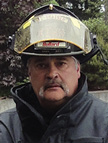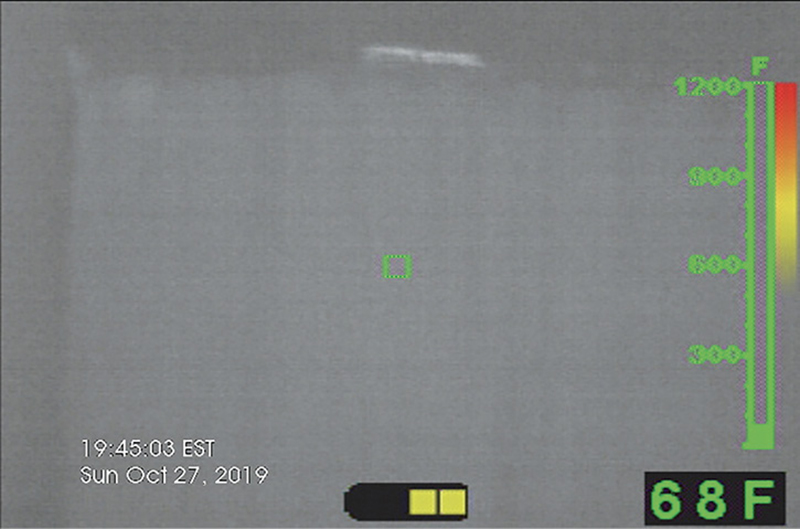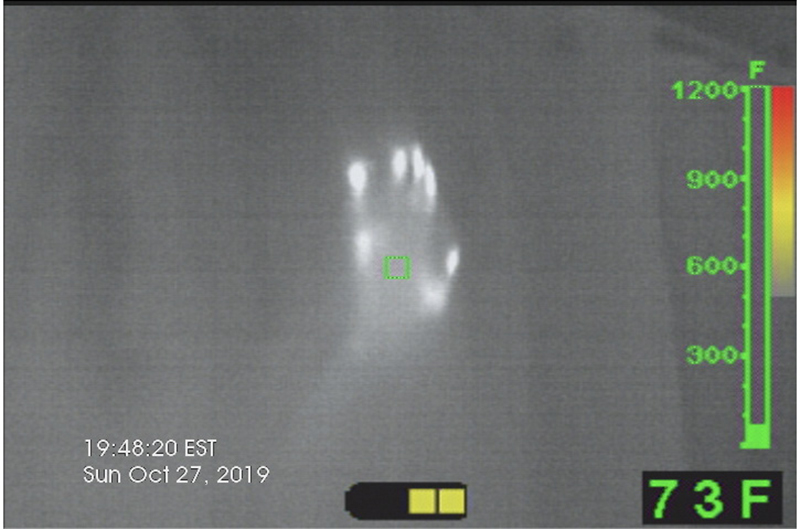An engine pulls up in front of the structure and the crew pulls off a line and heads toward the front door; smoke is showing from a second-story window.
The crew members mask up, crack open the nozzle to check for water flow, and make entrance into the structure. In the meantime, another engine, quint, and rescue arrive. The engine crew supplies the attack crew with water from a nearby hydrant and, shortly after, the attack crew declares the fire knocked down and retreats from the structure. Wait a minute; let me rewind and start from the beginning prior to all this happening.
Four separate fire departments that run regular mutual-aid calls got together for a routine monthly drill that I happened to be observing. The battalion chief explained the scenario to all crew members and finished by saying, “Train like you mean it.”
Now let’s go back to the training evolution that this engine crew just completed. What I didn’t see was the use of a thermal imager (TI). If you’re going to train like you mean it, then why wouldn’t you do so, because if this was the real thing, you’d want to be at your best. The more you use the TI in training, the more proficient you will become.
So, let’s go back to that training evolution. This time, the captain gets off the engine with a TI in hand and does a quick situational awareness 360° survey covering the chimney and vents and across the roof level; working down to the eaves, walls, doors, and windows; and then down to the basement or crawlspace area as the line is being stretched. With the information gathered, they make entrance through the front door. The captain can direct his crew where to go; this is called an imager-directed search. Can a quick primary search confirm that the structure is vacant, or is it?
Locating People with an IMAGER-Directed Search
People will seek shelter from fire in many places such as shower stalls and bathtubs; bathrooms seem to be the most popular. Occupants close the bathroom door and put a towel to seal the crack under the door to prevent smoke from getting in. They then seek refuge inside the tub enclosure or shower stall, closing the shower curtain or glass door, both of which limit the TI, as it cannot see through those materials. A manual search now must be performed by opening the curtain or shower door to investigate.
1 A shower curtain with a victim behind it, undetectable. (Photos courtesy of Bullard.)
2 The victim’s hand against the shower curtain, which is transferring heat through, making the victim detectable.
3 Stairs going down in low contrast.
4 Stairs going down in high contrast.
Now imagine being in a high-rise building or a hotel with different bathroom configurations. At a recent conference I attended, one room had a bathtub shower with a curtain and another had a bathtub and separate shower with a glass door, making this another imager-directed search opportunity because of the size of the rooms, the point being a bathroom is just one example of where victims may be found.
Let’s move on within the structure. What about the integrity of the structure itself? We’re already inside, but did we scan the floor to see what’s in front of us, raising the TI up to the ceiling and again scanning for structural integrity, fire conditions, and elevated temperatures including flow paths? Now scan on both sides of you in a “Z” pattern at the floor wall level halfway across the wall and wall ceiling level, and now turn around and look behind you. Check the doorways, as there could be a closet or doorway leading to a basement or upstairs or no doorway at all—just a set of stairs or even a victim behind the door.
Did you know you do not have depth perception using a TI? Is the object 4 feet or 14 feet away from you?
Let’s talk about stairs. Obviously, in smoky conditions, you are crawling on your hands and knees so you shouldn’t have to worry about falling down a flight of stairs because you didn’t see them. As an instructor, I have heard stories of firefighters who have fallen down stairways because they didn’t see them as they were looking straight ahead and not down with the TI.
Better yet, pull the TI away from your face every once in a while. A TI should not be used 100% of the time. It is just a tool to help guide and show you where dangers can lie that cannot be seen with the naked eye.
So, let’s go back to the title of this article, “Train Like You Mean It.” Next time you are running training drills, make sure you use all your tools to do what you are doing. This includes your TI. Yes, I know it’s just a training drill, but it will help you become more proficient and help keep you safe.
Manfred Kihn is a 19-year veteran of the fire service, having served as an ambulance officer, emergency services specialist, firefighter, captain, and fire chief. He has been a member of Bullard’s Emergency Responder team since 2005 and is the company’s fire training specialist for thermal imaging technology. He is certified through the Law Enforcement Thermographers’ Association (LETA) as a thermal imaging instructor and is a recipient of the Ontario Medal for Firefighters Bravery. If you have questions about thermal imaging, you can e-mail him at [email protected].






